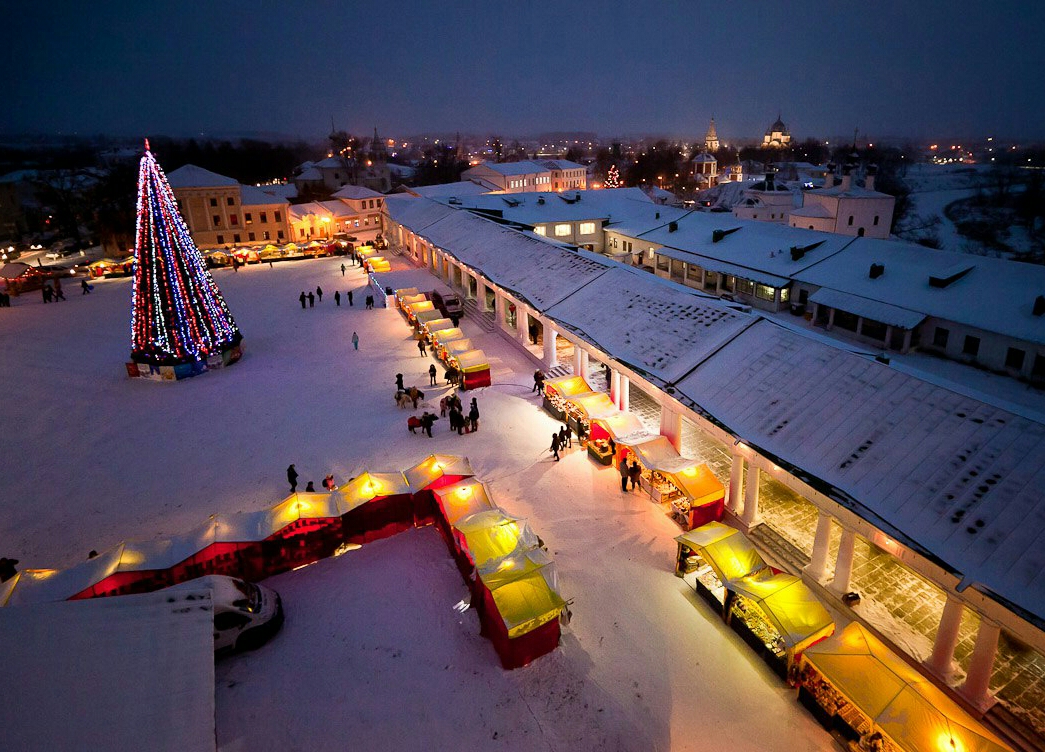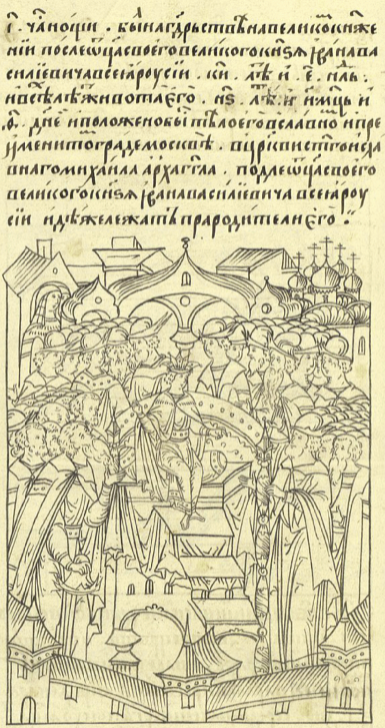|
Suzdal
Suzdal (, ) is a Types of inhabited localities in Russia, town that serves as the administrative center of Suzdalsky District in Vladimir Oblast, Russia, which is located along the Kamenka tributary of the Nerl (Klyazma), Nerl River, north of the city of Vladimir, Russia, Vladimir. As of the Russian Census (2021), 2021 Census, its population was 9,286. In the 12th century, Suzdal became the capital of the principality. Currently, Suzdal is the smallest of the Russian Golden Ring of Russia, Golden Ring towns. It has several sites listed as World Heritage Site, UNESCO World Heritage Sites. History The town's history dates back to 999 and 1024. In 1125 Yuri Dolgorukiy, Yury Dolgoruky made Suzdal the capital of the Vladimir-Suzdal#Rostov-Suzdal, Rostov-Suzdal principality. In 1157, Andrey Bogolyubsky, Andrei Bogolyubsky moved the capital from Suzdal to Vladimir, from which time the principality was known as Vladimir-Suzdal. Suzdal was burned and plundered in 1237 during the Mo ... [...More Info...] [...Related Items...] OR: [Wikipedia] [Google] [Baidu] |
Suzdalsky District
Suzdalsky District () is an administrativeLaw #130-OZ and municipalLaw #190-OZ district (raion), one of the administrative divisions of Vladimir Oblast, sixteen in Vladimir Oblast, Russia. It is located in the north of the oblast. The area of the district is . Its administrative center is the types of inhabited localities in Russia, town of Suzdal. Population: 39,736 (Russian Census (2002), 2002 Census); The population of Suzdal accounts for 20.2% of the district's total population. References Notes Sources * * * {{Authority control Districts of Vladimir Oblast Suzdalsky District, ... [...More Info...] [...Related Items...] OR: [Wikipedia] [Google] [Baidu] |
Golden Ring Of Russia
The Golden Ring of Russia () unites old Russian cities of five Oblasts of Russia, Oblasts – usually excluding Moscow – as a well-known Scenic route, theme-route. The grouping is centred northeast of the capital in what was the north-eastern part of ancient Rus' (region), Rus'. The ring formerly comprised the region known as Zalesye. The idea of the route and the term was created in 1967 by Soviet historian and essayist Yuri Bychkov, who published in ''Sovetskaya Kultura'' in November–December 1967 a series of essays on the cities under the heading: "Golden Ring". Bychkov was one of the founders of ''ВООПИК'': the All-Russian Society for the Protection of Monuments of History and Culture (these letters in Romanized form are VOOPIK). These ancient towns were heavily formative to the centrality of the Russian Orthodox Church in society. They preserve the memory of key events in medieval and Imperial Russian history. The towns have been called "open-air museu ... [...More Info...] [...Related Items...] OR: [Wikipedia] [Google] [Baidu] |
Vladimir Oblast
Vladimir Oblast () is a federal subject of Russia (an oblast). Its administrative center is the city of Vladimir, which is located east of Moscow. As of the 2010 Census, the oblast's population was 1,443,693. The UNESCO World Heritage List includes the 12th-century cathedrals of Vladimir, Suzdal, Bogolyubovo, and Kideksha. Geography Vladimir Oblast borders Moscow, Yaroslavl, Ivanovo, Ryazan, and Nizhny Novgorod Oblasts. The oblast is situated in the center of the East European Plain. The Klyazma and the Oka are the most important rivers. There are approximately three hundred lakes. The oblast is situated in a zone of mixed forests. The region's geology is characterized by a variety of sedimentary and igneous rocks, including sandstone, shale, limestone, granite, and diabase. There are also several mineral deposits in the oblast, including iron ore, apatite, and phosphate. Some notable natural landmarks in the oblast include the Klyazma Reservoir and the Suzda ... [...More Info...] [...Related Items...] OR: [Wikipedia] [Google] [Baidu] |
Nazism
Nazism (), formally named National Socialism (NS; , ), is the far-right totalitarian socio-political ideology and practices associated with Adolf Hitler and the Nazi Party (NSDAP) in Germany. During Hitler's rise to power, it was frequently referred to as Hitler Fascism () and Hitlerism (). The term " neo-Nazism" is applied to other far-right groups with similar ideology, which formed after World War II, and after Nazi Germany collapsed. Nazism is a form of fascism, with disdain for liberal democracy and the parliamentary system. Its beliefs include support for dictatorship, fervent antisemitism, anti-communism, anti-Slavism, anti-Romani sentiment, scientific racism, white supremacy, Nordicism, social Darwinism, homophobia, ableism, and the use of eugenics. The ultranationalism of the Nazis originated in pan-Germanism and the ethno-nationalist '' Völkisch'' movement which had been a prominent aspect of German ultranationalism since the late 19th centu ... [...More Info...] [...Related Items...] OR: [Wikipedia] [Google] [Baidu] |
Listed Building
In the United Kingdom, a listed building is a structure of particular architectural or historic interest deserving of special protection. Such buildings are placed on one of the four statutory lists maintained by Historic England in England, Historic Environment Scotland in Scotland, in Wales, and the Historic Environment Division of the Department for Communities in Northern Ireland. The classification schemes differ between England and Wales, Scotland, and Northern Ireland (see sections below). The term has also been used in the Republic of Ireland, where buildings are protected under the Planning and Development Act 2000, although the statutory term in Ireland is "Record of Protected Structures, protected structure". A listed building may not be demolished, extended, or altered without permission from the local planning authority, which typically consults the relevant central government agency. In England and Wales, a national amenity society must be notified of any work to ... [...More Info...] [...Related Items...] OR: [Wikipedia] [Google] [Baidu] |
Trans-Siberian Railway
The Trans-Siberian Railway, historically known as the Great Siberian Route and often shortened to Transsib, is a large railway system that connects European Russia to the Russian Far East. Spanning a length of over , it is the longest railway line in the world. It runs from the city of Moscow in the west to the city of Vladivostok in the east. During the period of the Russian Empire, government ministers—personally appointed by Alexander III and his son Nicholas II—supervised the building of the railway network between 1891 and 1916. Even before its completion, the line attracted travelers who documented their experiences. Since 1916, the Trans-Siberian Railway has directly connected Moscow with Vladivostok. , expansion projects remain underway, with connections being built to Russia's neighbors Mongolia, China, and North Korea. Additionally, there have been proposals and talks to expand the network to Tokyo, Japan, with new bridges or tunnels that would connect the main ... [...More Info...] [...Related Items...] OR: [Wikipedia] [Google] [Baidu] |
Ivan The Terrible
Ivan IV Vasilyevich (; – ), commonly known as Ivan the Terrible,; ; monastic name: Jonah. was Grand Prince of Moscow, Grand Prince of Moscow and all Russia from 1533 to 1547, and the first Tsar of all Russia, Tsar and Grand Prince of all Russia from 1547 until his death in 1584. Ivan's reign was characterised by Russia's transformation from a medieval state to a fledgling empire, but at an immense cost to its people and long-term economy. Ivan IV was the eldest son of Vasili III of Russia, Vasili III by his second wife Elena Glinskaya, and a grandson of Ivan III of Russia, Ivan III. He succeeded his father after his death, when he was three years old. A group of reformers united around the young Ivan, crowning him as tsar in 1547 at the age of 16. In the early years of his reign, Ivan ruled with the group of reformers known as the Chosen Council and established the ''Zemsky Sobor'', a new assembly convened by the tsar. He also revised the Sudebnik of 1550, legal code and in ... [...More Info...] [...Related Items...] OR: [Wikipedia] [Google] [Baidu] |
Vasili III Of Russia
Vasili III Ivanovich (; 25 March 14793 December 1533) was Grand Prince of Moscow and all Russia from 1505 until his death in 1533. He was the son of Ivan III and Sophia Paleologue and was christened with the name Gavriil (). Following on the ambitions of his predecessor Ivan, Vasili conquered Pskov, Ryazan and Smolensk as well as strengthening Russian influence in Kazan and to the Volga region. Several nobles were either exiled, sentenced or executed for criticizing his policies. Foreign affairs Vasili III maintained the policies initiated by his father Ivan III, focusing much of his reign on consolidating the territorial gains achieved by Ivan. Vasili annexed the last surviving autonomous provinces: Pskov in 1510, appanage of Volokolamsk in 1513, principalities of Ryazan in 1521 and Novgorod-Seversky in 1522. Vasili also took advantage of the difficult position of Sigismund of Poland to capture Smolensk, the great eastern fortress of Lithuania (siege started 1512 ... [...More Info...] [...Related Items...] OR: [Wikipedia] [Google] [Baidu] |
Vasily I Of Moscow
Vasily I Dmitriyevich (; 30 December 137127 February 1425) was Grand Prince of Vladimir and Moscow from 1389. He was the heir of Dmitry Donskoy, who reigned from 1359 to 1389. He entered an alliance with the Grand Duchy of Lithuania in 1392 and married Sophia, the only daughter of Vytautas, though the alliance turned out to be fragile, and they waged war against each other in 1406–1408. The raid on the Volga region in 1395 by the Turco-Mongol emir Timur resulted in a state of anarchy for the Golden Horde and the independence of Moscow. In 1412, Vasily resumed submission to the Horde. Family and early life Vasily was the oldest son of Dmitry Donskoy and Grand Princess Eudoxia, daughter of Grand Prince Dmitry Konstantinovich of Nizhny Novgorod. Reign While still a young man, Vasily, who was the eldest son of Grand Prince Dmitry Donskoy (ruled Moscow 1359–89), travelled to the Tatar khan Tokhtamysh (1383) to obtain the Khan's '' yarlik'' (patent) for his father for t ... [...More Info...] [...Related Items...] OR: [Wikipedia] [Google] [Baidu] |
Nizhny Novgorod
Nizhny Novgorod ( ; rus, links=no, Нижний Новгород, a=Ru-Nizhny Novgorod.ogg, p=ˈnʲiʐnʲɪj ˈnovɡərət, t=Lower Newtown; colloquially shortened to Nizhny) is a city and the administrative centre of Nizhny Novgorod Oblast and the Volga Federal District in Russia. The city is located at the confluence of the Oka (river), Oka and the Volga rivers in Central Russia, with a population of over 1.2 million residents, up to roughly 1.7 million residents in the urban agglomeration. Nizhny Novgorod is the List of cities and towns in Russia by population, sixth-largest city in Russia, the Volga#Biggest cities on the shores of the Volga, second-most populous city on the Volga, as well as the Volga Federal District. The city is located 420 kilometers (260 mi) east of Moscow. It is an important economic, transportation, scientific, educational and cultural centre in Russia and the vast Volga-Vyatka economic region, and the main centre of river tourism in Russia. In the his ... [...More Info...] [...Related Items...] OR: [Wikipedia] [Google] [Baidu] |
Principality Of Suzdal—Nizhny Novgorod
The Principality of Nizhny Novgorod-Suzdal (), also known as Suzdal-Nizhny Novgorod (also spelt ''Nizhnii''), was a principality formed in 1341. Its main towns were Nizhny Novgorod, Suzdal, Gorokhovets, Gorodets, and Kurmysh. Nizhny Novgorod was the seat of the principality from 1350. The prince Dmitry of Suzdal obtained the yarlik (patent) for the title of Grand Prince of Vladimir from khan Nawruz Beg in 1360. History merged the principalities of Suzdal and Nizhny Novgorod in 1341 with the approval of Jani Beg, who became Khan of the Golden Horde next year. In 1341, after the death of Ivan Kalita, Khan Uzbek divided the main territories of northeastern Rus'. Part of the land, which included Nizhny Novgorod, Gorodets and Unzha, became the property of Prince Konstantin of Suzdal. An independent Nizhny Novgorod-Suzdal Principality was formed, which occupied a vast territory. In the east, its border ran along the Sura River, in the southeast and south - along the rivers Py ... [...More Info...] [...Related Items...] OR: [Wikipedia] [Google] [Baidu] |





